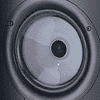Adds Windows Audio Session API exclusive mode output support, allowing bit-exact output and muting all other sounds. Windows Vista SP1 or newer required.
Страница плагина: http://foobar2000.org/components/view/foo_out_wasapi
WASAPI output support v3.4 [30.12.2020]
Список разделов › foobar2000 › Плагины
Сообщений: 68
• Страница 4 из 4 • 1, 2, 3, 4
- foobar2000.ru
- Автор темы, Робот
- Репутация: 9
- С нами: 12 лет 5 месяцев
copah:Ну это разве, что очень малочисленные USB Audio работающие в Asyncronous режиме, да почти все FireWire. Если не работает push, то скорее всего не зацепился (не исправен) HPET.onv:Какие-то звуковые устройства (USB, например) работают только в режиме event
простите, что некрофилю топ, но в инете инфы не нашел, а понять хочется. то есть firewire и wasapi в режиме event несовместимы?
опытным путем пока пришел к такому: в режиме wasapi event firewire звуковая криво переключает sample rate. например играет нечто в 44100, а следом 96000. в итоге 96000 начинает играть с пониженным питчем (как если бы замедлили пленку) в режиме же пуш это переключение проходит без проблем и аудио материал играет как положено.
PS иными словами не переключается автоматически sample rate
- kthxoic
- Репутация: 0
- С нами: 6 лет 11 месяцев
Вряд-ли найдется тут кто-то с таким интерфейсом "хитрым" у звуковой и компа. В виндовом микшере галочки стоят на монопольном режиме ?
- vladj


- Откуда: Пермский край
- Репутация: 427
- С нами: 14 лет 9 месяцев
на монопольном стоят, да, дело не в нем. вот хотел товрища, которого я процитировал расспросить поподробнее, так как он, похоже, что-то знает об этом :) собственно проблему я описал. wasapi push - проблемы с переключением sample rate. wasapi event - проблем нет. исходя из того, что написал copah, звуковые на firewire не дружат с режимом push wasapi. по крайней мере я так понял, а главное в инете не смог найти на эту тему ничего
- kthxoic
- Репутация: 0
- С нами: 6 лет 11 месяцев
Проблемы-то никакой нет. Два разных режима как раз и сделаны для совместимости с максимальным количеством устройств. Если бы ни один режим нормально не работал, вот тогда была бы проблема.kthxoic:собственно проблему я описал
- Azaza


- Репутация: 413
- С нами: 8 лет 2 месяца
для меня это именно проблема, так как kodi использует васапи только в режиме пуш :) хочется понять почему все именно так. почему fw не дружен с васапт в режиме пуш
- kthxoic
- Репутация: 0
- С нами: 6 лет 11 месяцев
И, поняв, Вы что сделаете? Напишете новый драйвер для своей звуковой?kthxoic:хочется понять почему все именно так. почему fw не дружен с васапт в режиме пуш
Вроде, не правда это.kthxoic:так как kodi использует васапи только в режиме пуш
http://kodi.wiki/view/Windows_audio (тут заодно и различия между режимами описаны)
In addition Kodi uses WASAPI in the more modern Event driven mode. Previously Kodi used the Push mode, so both the audio hardware & audio driver need to support the Event mode for audio to work with WASAPI selected.
<...>
In addition to Shared and Exclusive modes, there are two modes for how data is passed from the application to the audio driver.
The normal manner is in push mode - a buffer is created which the audio device draws from, and the application pushes as much data in as it can to keep that buffer full. To do this it must constantly monitor the levels in the buffer, with short "sleeps" in between to allow other threads to run.
WASAPI, and most modern sound devices, also support a "pull" or "event-driven" mode. In this mode two buffers are used. The application gives the audio driver a call-back address or function, fills one buffer and starts playback, then goes off to do other processing. It can forget about the data stream for a while. Whenever one of the two buffers is empty, the audio driver "calls you back", and gives you the address of the empty buffer. You fill this and go your way again. Between the two buffers there is a ping-pong action: one is in use and draining, the other is full and ready. As soon as the first is emptied the buffers are switched, and you are called upon to fill the empty one. So audio data is being "pulled" from the application by the audio driver, as opposed to "pushed" by the application.
К тому же у kodi есть свой форум и багтрекер.
- Azaza


- Репутация: 413
- С нами: 8 лет 2 месяца
Вышла новая версия плагина: WASAPI output support v3.4 [30.12.2020]
- foobar2000.ru
- Автор темы, Робот
- Репутация: 9
- С нами: 12 лет 5 месяцев
Сообщений: 68
• Страница 4 из 4 • 1, 2, 3, 4
